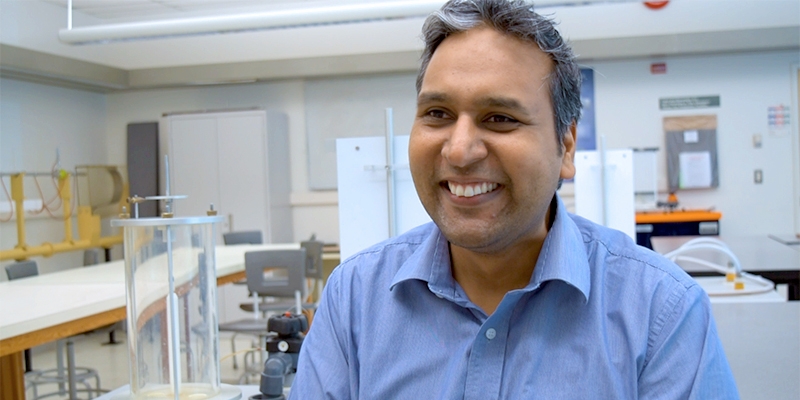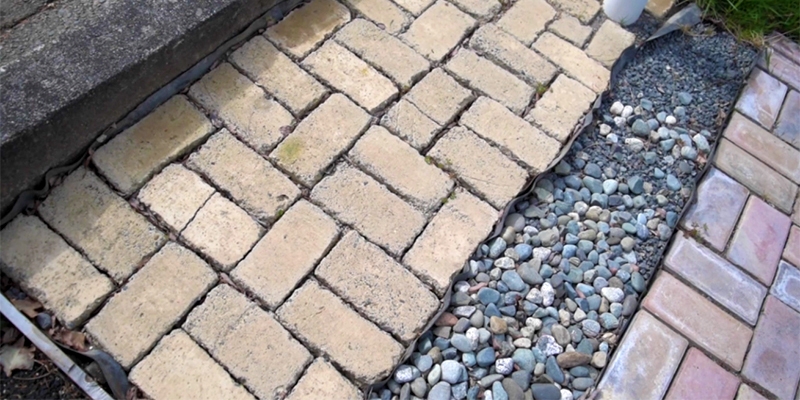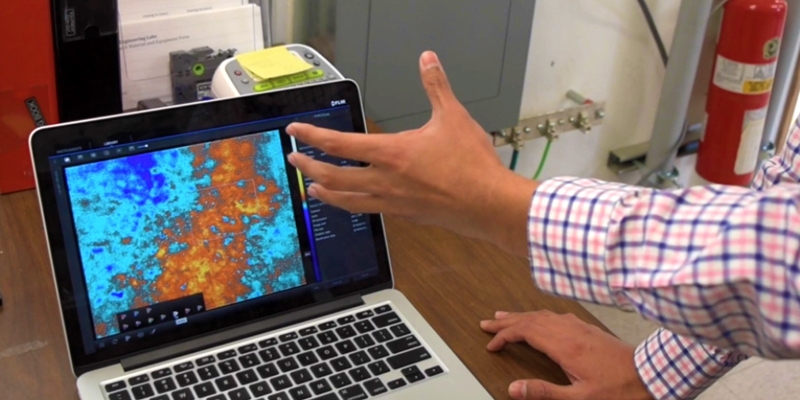Dr. Rishi Gupta (University of Victoria, Canada) and Dr. Urmil Dave, (Nirma University, India) have developed a new “super sustainable” building material entirely made from waste.
The innovative material uses ash produced from coal-based power plants. Although fly ash captured from the chimneys in these plants have been utilized before, Dr. Rishi’s IC-IMPACTS project is unique in that it incorporates bottom ash as well. Bottom ash is also found at coal-based power plants but is usually made into a slurry before being disposed of into ponds for storage (sometimes called “pond ash”).
“In traditional materials, cement is generally the most expensive component. By eliminating cement entirely, the cost savings would be significant,” said Dr. Gupta. He estimates that this new material could cost 50% less to produce than conventional materials, depending on the availability and source of the fly ash and bottom ash.
 Following Dad’s Footsteps
Following Dad’s FootstepsDr. Gupta has been working on sustainable construction materials and infrastructure technologies for the past 15 years. “I grew up in India where my father had a construction company. He had a PhD in Concrete Technology and he always felt rewarded transforming paper designs into real structures. As a teenager I was often visiting construction sites, surrounded by concrete, rebar, steel and it resonated with me. I guess I’ve followed in my dad’s footsteps.”
 A Complex Material
A Complex MaterialCreating a material mainly comprised of fly ash and bottom ash is challenging as the two compounds are physically and chemically very different from each other. The research team used the ash byproduct to create a new geopolymer material. The material also requires precursors to activate a polymerization reaction and intense heat to cure the final product. The team used potassium-based precursors and an ambient-curing method where no external source of heat was needed. Dr. Gupta felt that using an intense amount of energy to cure the material would not be truly sustainable.
 Collaborating with Indian Experts
Collaborating with Indian ExpertsIndian researchers at Nirma University are analyzing different proportions of fly ash and bottom ash and have started working on optimizing the final mix. On the other side of the world, Canadian researchers are analyzing the material at a microscopic level. University of Victoria is home to the one of the world’s best Scanning Electron Microscope in the world and Dr. Gupta is using it to analyze what the geopolymer material looks like at the micro and nano level.
Dr. Gupta’s team created a small test site of geopolymer pavers at University Victoria to study the effects of rain and percolation on the material. The team is analyzing the performance of the material and monitoring for any potential hazardous runoff; initial results are promising.
The team is hoping to finalize development of the material and apply it in the field very soon. They’re working with RJC Consulting to help determine a commercial deployment for structural applications in Canada, and Universal Enterprise to apply these materials as a low cost pavement in rural communities in India. The team is looking to deploy their new materials in early 2017 in a rural community in India.
2024 IC-IMPACTS Conference in Delhi December 9 - 11, 2024 New Delhi, India